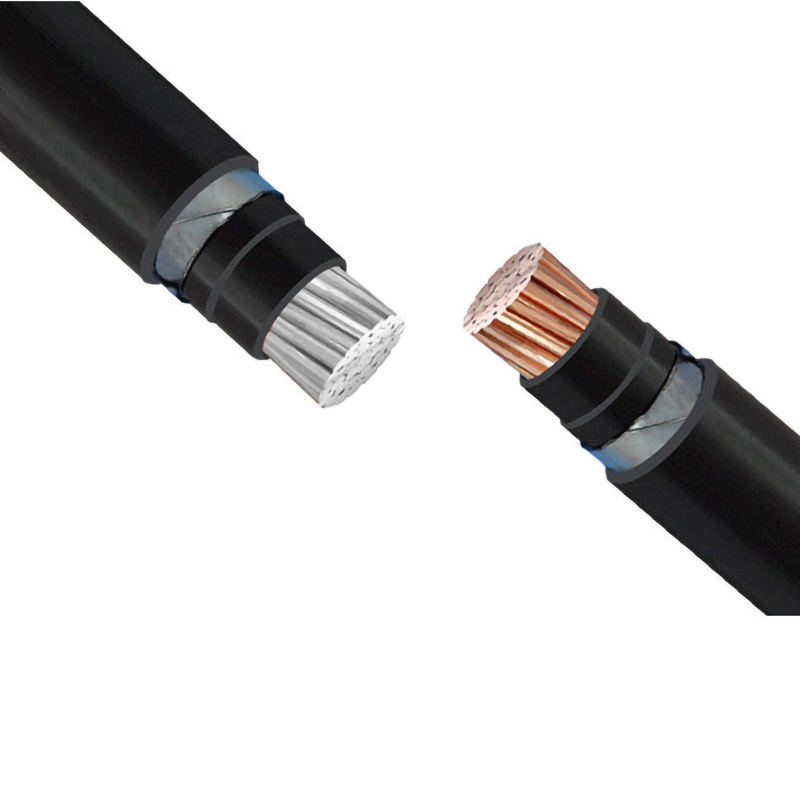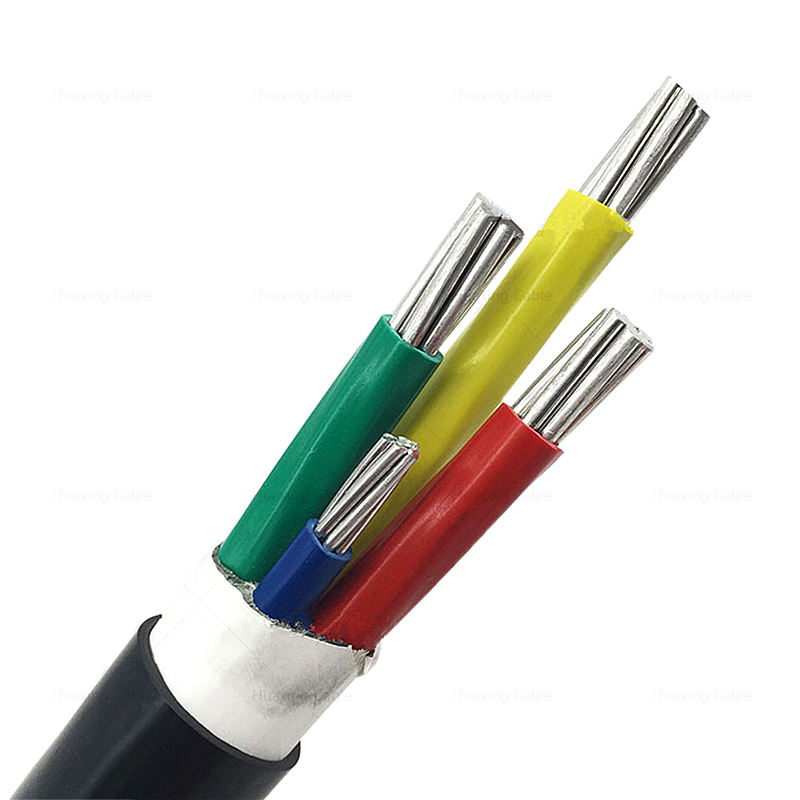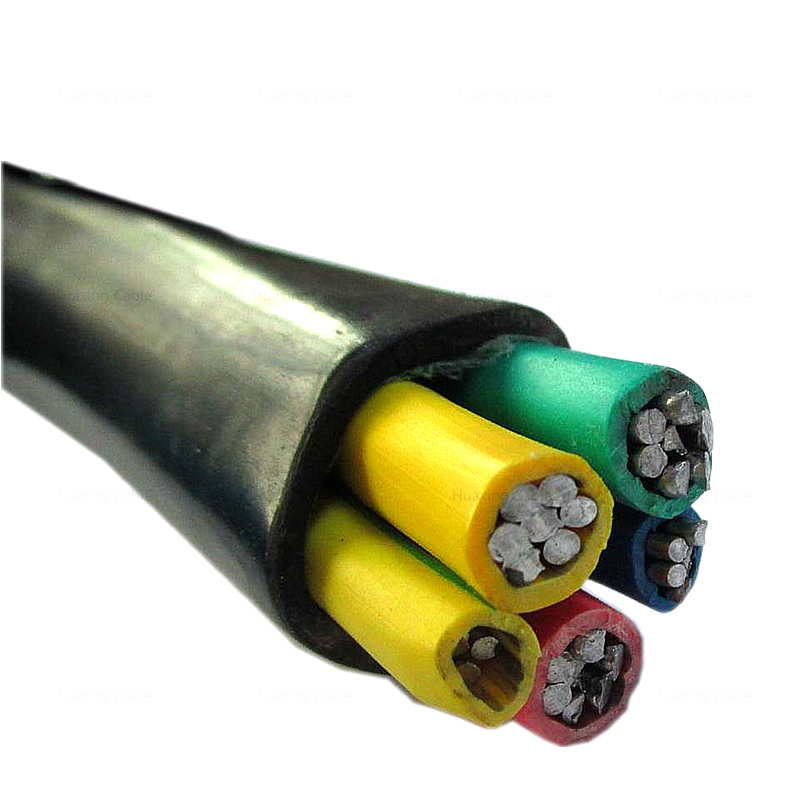The selection of cable sheath should meet the following requirements:
1 For AC system single-core power cables, when it is necessary to increase the resistance of the cable to external forces, non-magnetic metal armor layers should be used, and steel armor without non-magnetic effect treatment should not be used.
2 For cables in humid, chemically corrosive environments or easily immersed in water, the metal layer, reinforcement layer, and armor should have a polyethylene outer sheath, and the thick steel wire armor of the underwater cable should have an extruded outer sheath.
3 In crowded public facilities and places with low-toxicity, flame-retardant and fire-proof requirements, halogen-free outer protective layers such as polyvinyl chloride or ethylene-propylene rubber can be selected.
When the fire protection has low toxicity requirements, it is not suitable to use PVC outer sheath.
4 Except for low-temperature environments below -150C or places immersed in medicinal chemical liquids, as well as cables with low-toxicity and flame-retardant requirements, polyethylene should be used as the outer sheath of cables, and the outer sheath of polyvinyl chloride can be selected.
5 Cross-linked polyethylene(XLPE) insualted cables of 6~35kV or above 35kV used in places where water or chemical liquids are immersed should have radial waterproof structures such as metal-plastic composite water-blocking layer and metal jacket that meet the requirements of use. Medium and high voltage XLPE cables laid underwater should have a longitudinal water-blocking structure.
For the reinforced layer type of self-contained oil-filled cable, the height difference between the highest and lowest point when the line is not equipped with a plug-type connector should meet the following requirements:
1 When there is only a radial reinforcement layer such as copper tape, the allowable height difference should be 40m; but it should be 30m when used in important circuits.
2 When there are reinforcing layers such as copper tape in the radial and longitudinal directions, the allowable height difference is 80m; but it should be 60m when used in important circuits.

The selection of the outer sheath of the cable for direct burial laying shall meet the following requirements:
1 When the cable is under high pressure or has a danger of mechanical damage, it should have a reinforced layer or steel tape armor.
2 In the soil where displacement may occur, such as the quicksand layer and backfilled land belt, the cable should be armored with steel wire.
3 For extruded cables used in areas where termites are seriously harmed, a higher-hardness outer sheath should be selected, or a thin outer sheath with higher hardness can be extruded on the ordinary outer sheath.
The material of the protective layer can be nylon or special polyolefin copolymer, etc., or metal sheath or steel tape armor.
4 In areas with high groundwater level, polyethylene outer sheath should be used.
5 In addition to the above, an outer protective layer without armor can be selected.

The selection of cable sheath when laying in the air should meet the following requirements:
1 When the small cross-section extruded insulated cable is directly laid on the arm support, it should be armored with steel tape.
2 In places with high safety requirements and severe rodent damage, such as underground passenger transportation and commercial facilities, plastic insulated cables should be armored with metal tape or steel tape.such as 1-35kV middle voltage underground armoured power cable .
3 When the cable is in a high drop stress condition, the multi-core cable should have steel wire armor, and the AC single-core cable should comply with Article 3.5.1 of this code.
Provisions.
4 Cables that are laid on bridges and other densely supported cables may not contain armor.
5 When it is clear that it is necessary to coordinate with environmental protection, the outer protective layer of polyvinyl chloride should not be used.
6 Except for cables with heat-resistant outer sheaths such as polyethylene, which should be used in accordance with the provisions of paragraphs 3 and 4 of Article 3.5.1 of this code and paragraph 5 of this article, and cables with heat-resistant outer sheaths such as polyethylene should be used in places with high temperature above 60℃ Outer protective layer.
Cables that require frequent bending or loops with higher flexibility requirements, such as mobile electrical equipment, should use rubber outer sheaths.
The cables in the place where radiation is applied should have outer sheaths such as polyvinyl chloride, neoprene rubber, and chlorosulfonated polyethylene suitable to withstand the intensity of radiation radiation.
The cable laid in the protective tube shall have an extruded outer protective layer.

The selection of the sheath for laying cables under water shall meet the following requirements:
1 In ditches, small rivers that are not navigable, cables that do not need an armored layer to withstand tension can be armored with steel tape.
2 For cables in rivers, lakes and seas, the steel wire armor type selected should meet the stress conditions. Optional when laying conditions have mechanical damage and other preventive requirements
Use an outer protective layer that meets the requirements of protection and corrosion resistance enhancement.
3.5.9 The selection of cable sheath when the path passes through different laying conditions shall meet the following requirements:
1 When the total length of the line does not exceed the length of the cable manufacturing, it is advisable to select the same or different ones that meet the conditions of the entire line.

